How Fast Will a 55 lb Thrust Trolling Motor Go?
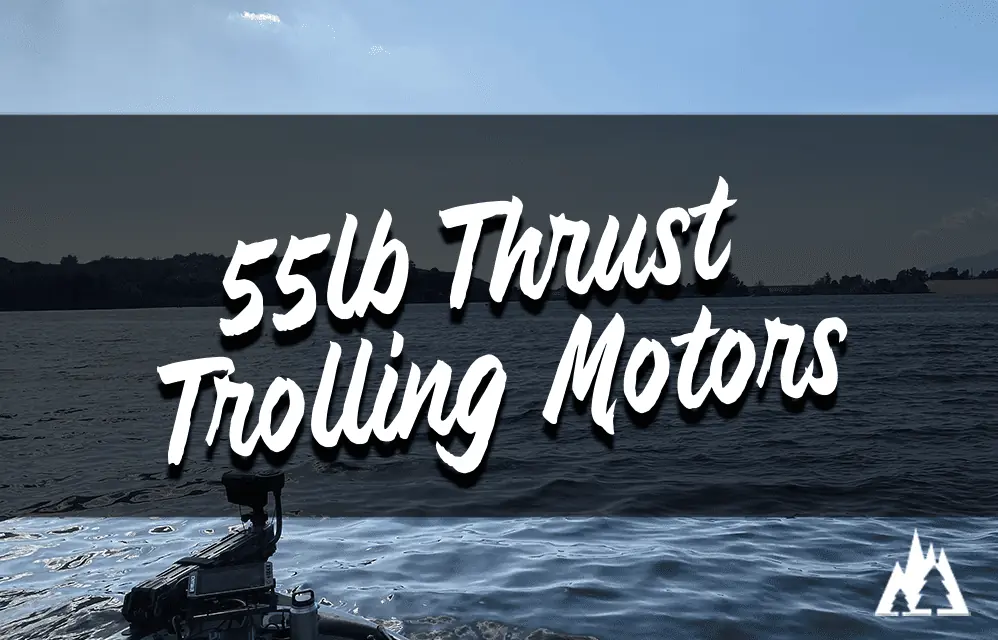
If you’re a boat owner, we all know the importance of a trolling motor when fishing.
Like everything else, you have options when it comes to fishing gear.
And one of the options for trolling motors is the thrust level. If you’re unfamiliar with thrust power, go here.
If you’re wondering just how fast can a trolling motor with a thrust of 55 lb go…
I’ll break it down for you.
This is a common question among outdoor anglers looking for the ideal mix of power and efficiency in their trolling motors.
We’ll look at the factors influencing the speed of a 55 lb thrust trolling motor, such as boat weight, wind resistance, and load.
I’ll walk you through choosing the best trolling motor size based on weight, boat factors, and power source possibilities, in addition to teaching you how to calculate the proper amount of thrust for your particular boat or kayak.
I’ll also advise you on maintenance tips and safety precautions to ensure you can confidently operate your trolling motor.
Aside from answering the question “How fast will a 55 lb thrust trolling motor go?” this post discusses essential accessories such as anchors and fish finders and towing capacity considerations when using a trolling motor.
So gear up for an educational voyage as we learn everything there is to know about maximizing the performance of your electric trolling motors
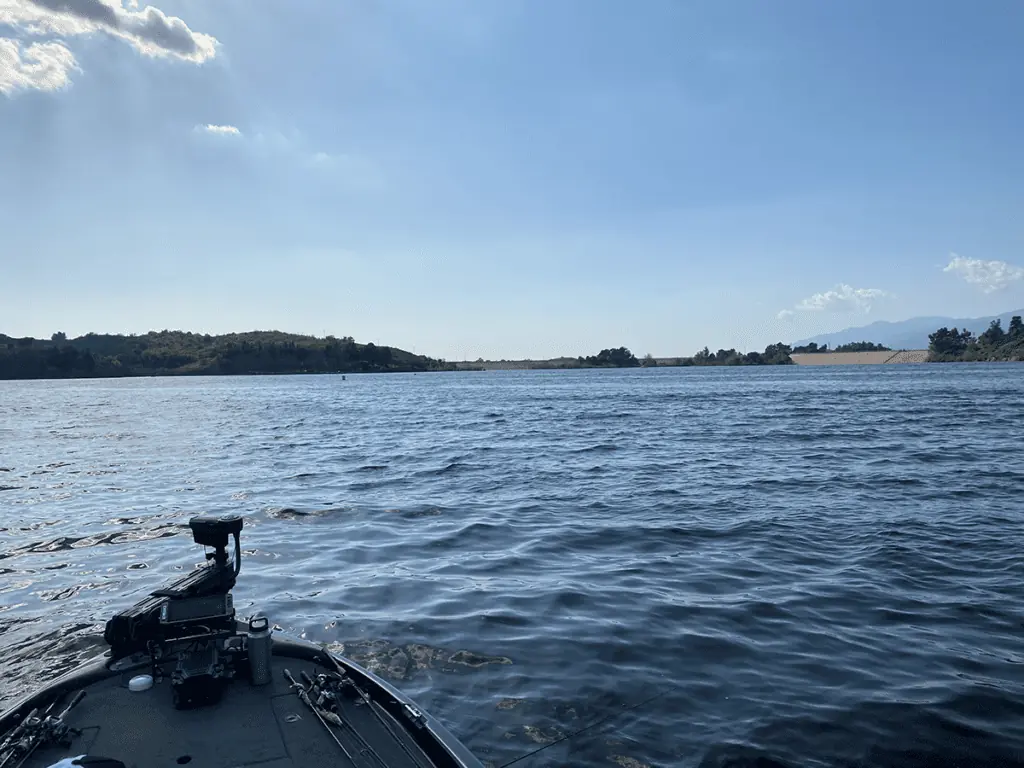
A 55 lb Thrust Trolling Motor’s Maximum Speed
In optimum water conditions, a 55 lb thrust trolling motor may reach up to 5 miles per hour. This speed is influenced by boat weight, battery type used for power supply, and motor propellers. When comparing this maximum speed to kayaks and different-sized boats, you will better understand how effective a trolling motor can be on various vessels.
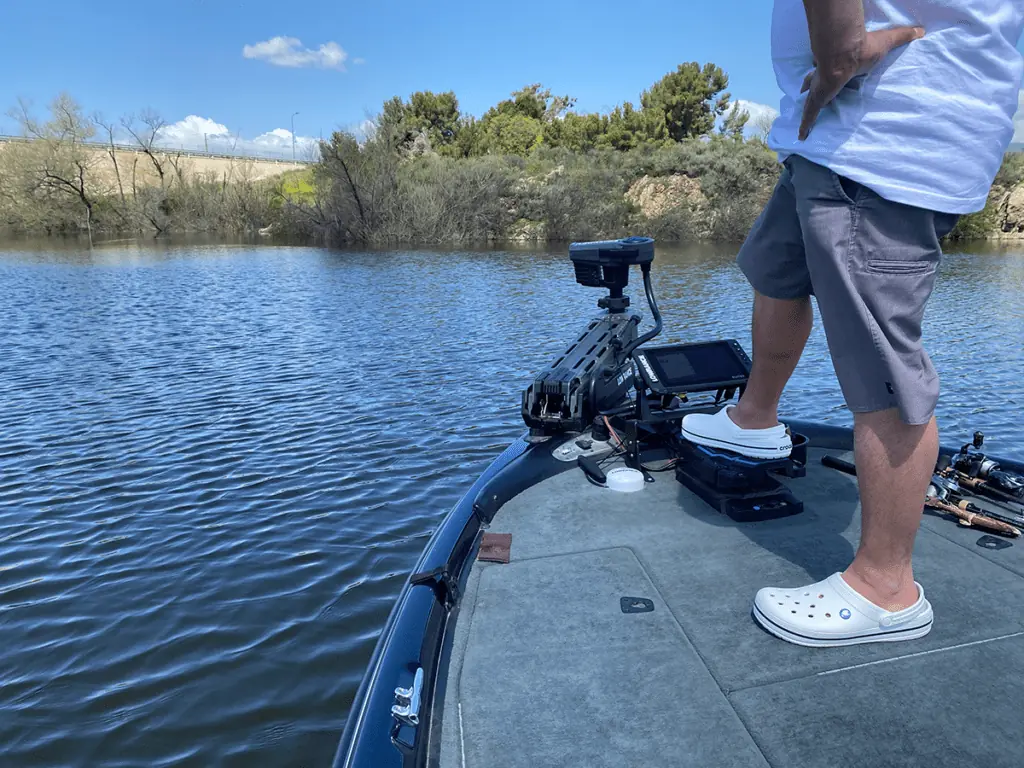
Factors Influencing Trolling Motor Top Speeds
Boat Weight
Heavier boats require more power from the trolling motor to achieve higher speeds. When employing an electric trolling motor, the whole weight of your vessel, including passengers and gear, has a considerable impact in determining its top speed.
Battery Type
The quality and capacity of your powerful trolling motor’s battery supply substantially influence its performance. Compared to traditional marine batteries, high-quality batteries, such as lithium-ion, provide consistent voltage levels throughout their discharge cycle, ensuring better efficiency and faster speeds.
Propeller Blade Type
The decision between two- and three-blade propellers impacts your bow mount motor’s peak speed.
Three-blade props provide superior acceleration but may trade off some top-end speed. In contrast, two-blade props are normally faster at attaining maximum velocity but may struggle during the initial acceleration phase.
Kayak and Larger Boat Performance Comparison
Smaller vessels, such as kayaks, benefit more from electric trolling motors than larger vessels, such as Jon boats or moderate load fishing crafts, due to their lighter weights, allowing for easier maneuverability through water without excessive amounts of thrust force to be applied constantly.
This is not to say that larger boats cannot benefit from a 55 lb thrust trolling motor; it simply means they may not reach the same top speeds as smaller vessels.
For example, depending on factors such as wind and kayak speed, trolling motors equipped with a Minn Kota Endura Max trolling motor may reach maximum speeds of roughly 4-5 mph.
In contrast, a bigger Jon boat with the same motor may only reach top speeds of 3-4 mph under identical conditions due to its increased weight requiring more power output for overall propulsion.
Finally, several factors, such as wind and water conditions, can influence the maximum speed of a 55 lb thrust trolling motor. With this in mind, it is important to understand how these factors can impact its performance when operating larger boats or kayaks.
Wind and Water Conditions
The actual speed of a 55 lb thrust trolling motor varies based on wind conditions, the water quality (calm or rough), and the frequency with which it is maintained. Understanding how these components affect your boat’s movement helps ensure you get the most out of your strong trolling motor while fishing or camping.
The Effect of Strong Currents on Maximum Thrust Capabilities
Maximum speed with a 55 lb thrust trolling motor can be difficult to achieve in conditions with strong currents. The current’s force works against the power provided by the electric trolling motors, making it difficult to sustain steady high speeds. For example, if you use a bow mount motor in a region with strong tidal movements or fast-flowing rivers, expect lower performance than in calm waters.
To address this issue, purchase a more powerful trolling motor model to handle such conditions. Furthermore, proper planning and understanding local water patterns will allow you to navigate these areas more efficiently.
The Importance of Maintaining Peak Performance Levels in Extreme Weather Conditions
Maintaining peak performance levels is crucial when operating under difficult weather conditions such as high winds or storms. These factors impact your boat’s stability and ability to reach the maximum thrust capabilities afforded by electric trolling motors seen in Jon boats carrying moderate loads.
Anchoring Tactics
Proper anchoring techniques will assist stable your vessel in windy conditions while allowing you to control your trolling motor better.
Maintaining your boat and its components regularly will improve overall performance, including the efficiency of your trolling motor. Check for any loose connections or damaged parts that could affect high-speed capabilities.
Weather Planning
Check weather forecasts before heading out to prevent unfavorable conditions that could impact the performance of your trolling motor. If you find yourself in inclement weather, have a backup plan to ensure your safety and effective use of the motor.
Finally, understanding how wind and water conditions influence the thrust achieved by a 55 lb trolling motor speed is essential for maximizing its potential during outdoor activities. By understanding these factors and taking the required safeguards, you may enjoy easy sailing while making the most of your powerful electric trolling motors.
Wind and water conditions can dramatically impact the performance of a trolling motor. Thus, it is essential to account for them. In addition, you can improve your boat’s efficiency by minimizing drag through correct storage practices and upgrading to lithium batteries.
Increasing Efficiency by Reducing Drag
To improve efficiency while using a 55 lb thrust trolling motor on smaller fishing boats such as kayaks, one should limit drag generated by needless objects stored onboard, which can significantly slow down its overall speed. Upgrading batteries also improves operational voltage by preventing substantial voltage decreases during discharge cycles, allowing these motors to achieve even higher top speeds.
Proper Storage Techniques for Small Vessels to Reduce Drag
Proper storage practices are crucial for decreasing drag and increasing the performance of your electric trolling motor. Here are some tips for reducing drag:
Maintain a Clean Deck
Remove any clutter or loose items from the boat’s surface that could cause resistance to water flow.
Distribute Weight Uniformly
Make sure that your gear and passengers are fairly distributed throughout the vessel to avoid unequal weight distribution, which can generate additional drag.
Keep your boat’s hull clean by removing algae, barnacles, and other debris that might accumulate over time and contribute to greater resistance in the water.
Advantages of Using Lithium Batteries Instead of Traditional Marine Batteries
Battery technology has improved significantly, with lithium-ion batteries becoming increasingly popular among boaters due to their numerous advantages over traditional marine batteries. Among the benefits are:
- Longer longevity: Lithium-ion batteries have a longer lifespan than lead-acid batteries and can save money in the long term.
- Lighter weight: Lithium-ion batteries are substantially lighter than lead-acid batteries, reducing overall boat weight and improving performance.
- Faster charging: Lithium-ion batteries charge up to four times faster than standard marine batteries, ensuring your trolling motor is always ready to use when needed.
- Better voltage stability: Lithium-ion batteries maintain steady voltages throughout the cycle, unlike traditional marine batteries, which suffer from large voltage drops during discharge cycles. This improves the efficiency and top speeds of your 55 lb thrust trolling motor.
Minimizing drag on small vessels such as kayaks and upgrading to lithium-ion batteries will considerably improve the efficiency of your 55 lb thrust trolling motor. Following these tips and investing in sophisticated battery technology will allow you to get the most out of your strong trolling motor while enjoying outdoor activities like fishing or camping with ease.
Reduced air resistance in your smaller boat can increase efficiency, allowing you to get more out of it. For example, popular versions like the Newport Vessels NV-Series and Minn Kota variation have superior corrosion protection features and quick-release levers for fast installation, making them an excellent alternative for anyone wishing to upgrade their trolling motor.
Calculating the Appropriate Thrust for Your Boat or Kayak
Various online calculators can be used to calculate the proper amount of thrust needed for your specific boat or kayak, taking into account factors such as boat size, weight distribution onboard, and prevailing weather/water body characteristics at any given thrust. Based on real-world data inputs provided by users, these tools are invaluable in determining which precise model/configuration within this category will best fit individual requirements/preferences.
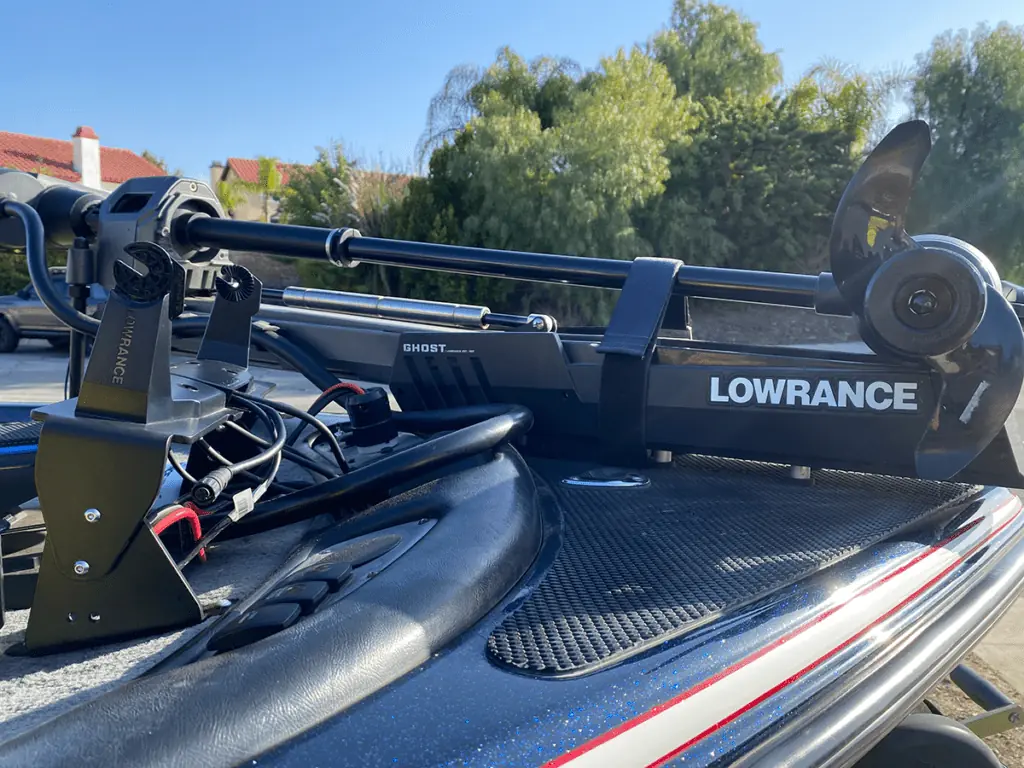
Considerations When Using a Thrust Calculator
When utilizing an online trolling motor calculator, it is essential to consider many critical factors that will influence the performance and efficiency of your electric trolling motors. Some crucial factors are as follows:
The length and width of your boat or kayak are important factors in determining how much thrust you’ll want from your bow mount motor.
Total Weight: When calculating maximum thrust, consider not only the weight of the vessel but also the weight of passengers, gear, and other equipment on board.
Whether sailing tranquil lakes or turbulent seas, different water conditions necessitate different power levels from your trolling motor.
Weed Density & Underwater impediments: In areas with dense vegetation or underwater impediments, more powerful trolling motors may be required to maintain top speed without becoming entangled in debris.
The Value of Accurate Input Data in Determining Trolling Motor Performance
It is crucial to supply proper input data when utilizing thrust calculators to ensure the best performance from your trolling motor. For example, by providing exact data, you may avoid underestimating or overestimating the power needed for your vessel and water environment. This will not only help you choose a good model with enough maximum thrust but also help you avoid potential damage to your boat caused by a too-strong trolling motor.
For example, suppose you have a small kayak and underestimate its entire weight (including passengers and gear). In that case, the calculator may recommend a less powerful motor that may struggle to sustain top speed when loaded with equipment for camping excursions or fishing adventures. On the other hand, choosing an excessively powerful trolling motor for lighter Jon boats may lead to unnecessary energy consumption and increased wear on boat components.
To ensure optimal performance from electric trolling motors across various vessel types, such as kayaks or larger boats, ensure that all relevant factors have been considered before making final decisions about which configuration best suits individual requirements/preferences.
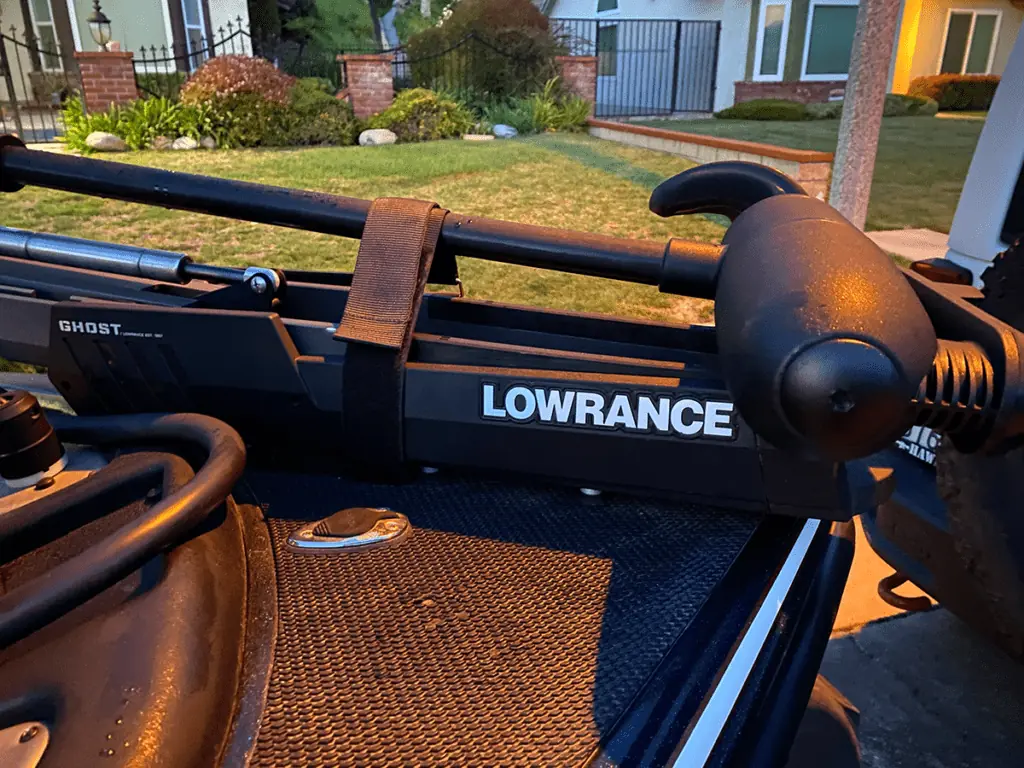
Common Questions
How fast can a trolling motor with a thrust of 55lb propel a kayak?
A 55lb thrust trolling motor can propel a kayak at speeds ranging from 4-6 mph, depending on factors such as boat weight and passengers, water conditions, and wind resistance. Keep in mind that adding extra weight or meeting rougher waves may cause your speed to decrease.
A 55 lb thrust trolling motor has how much horsepower?
A good rule of thumb for translating pounds of thrust to horsepower is to divide by 75. As a result, a 55 lb thrust trolling motor equals about 0.73 horsepower (HP). However, due to factors such as efficiency and propeller design, this conversion is not exact.
How fast can a 62 lb thrust trolling motor travel?
The speed attained with a 62 lb thrust trolling motor is determined by several factors, including boat size and weight, water conditions, and wind resistance. Under ideal conditions and with lighter boats or kayaks, you can expect speeds ranging from around 5-7 mph.
How fast can my trolling motor travel?
To accurately assess your trolling motor’s speed potential, examine its power rating (thrust), your vessel’s size/weight/load capacity (boat top speed calculator), and any external factors affecting performance while out on the water, such as weather conditions or currents.
Before You Go
Check out our other trolling motor resources before heading out on the water:






